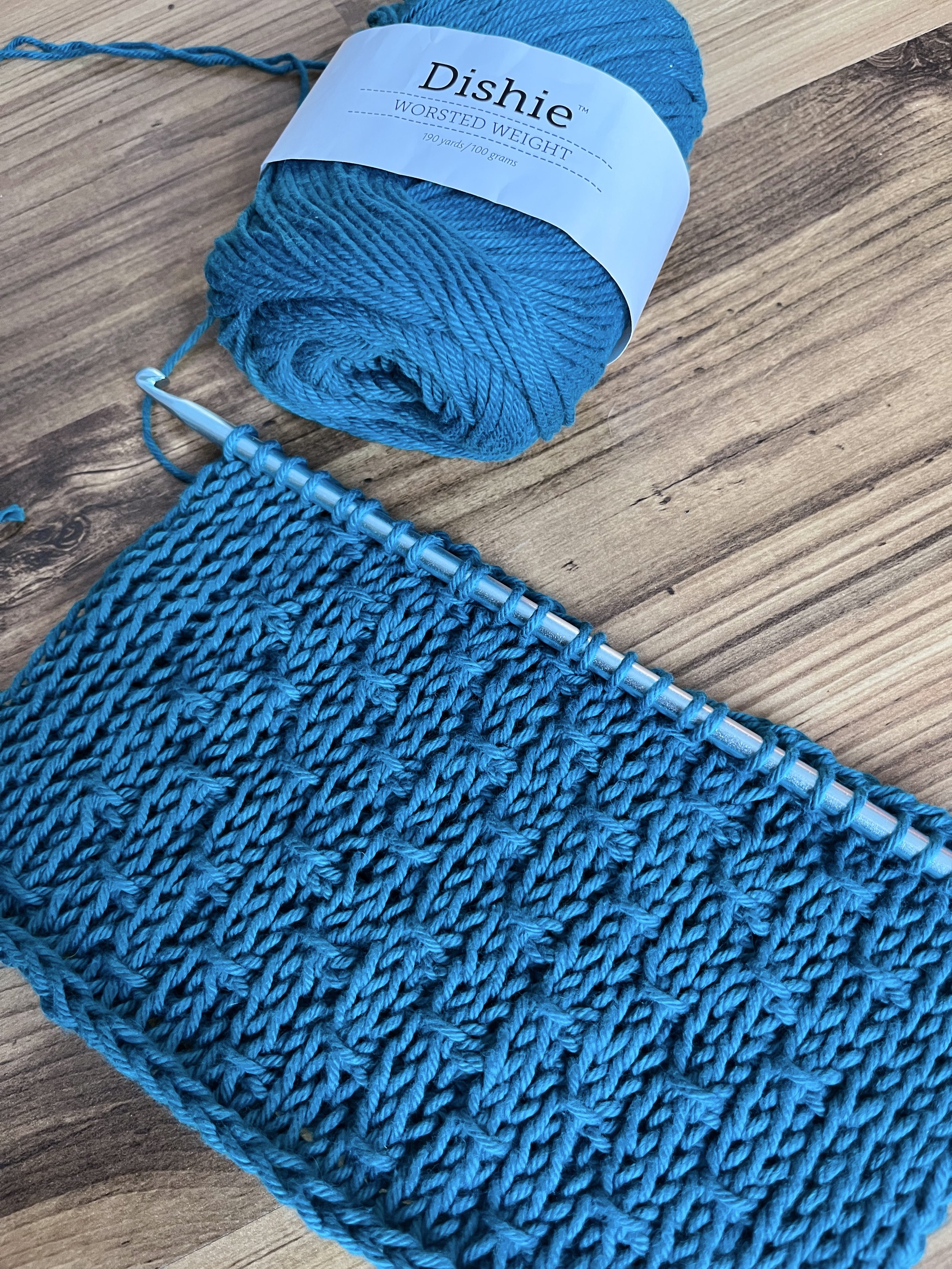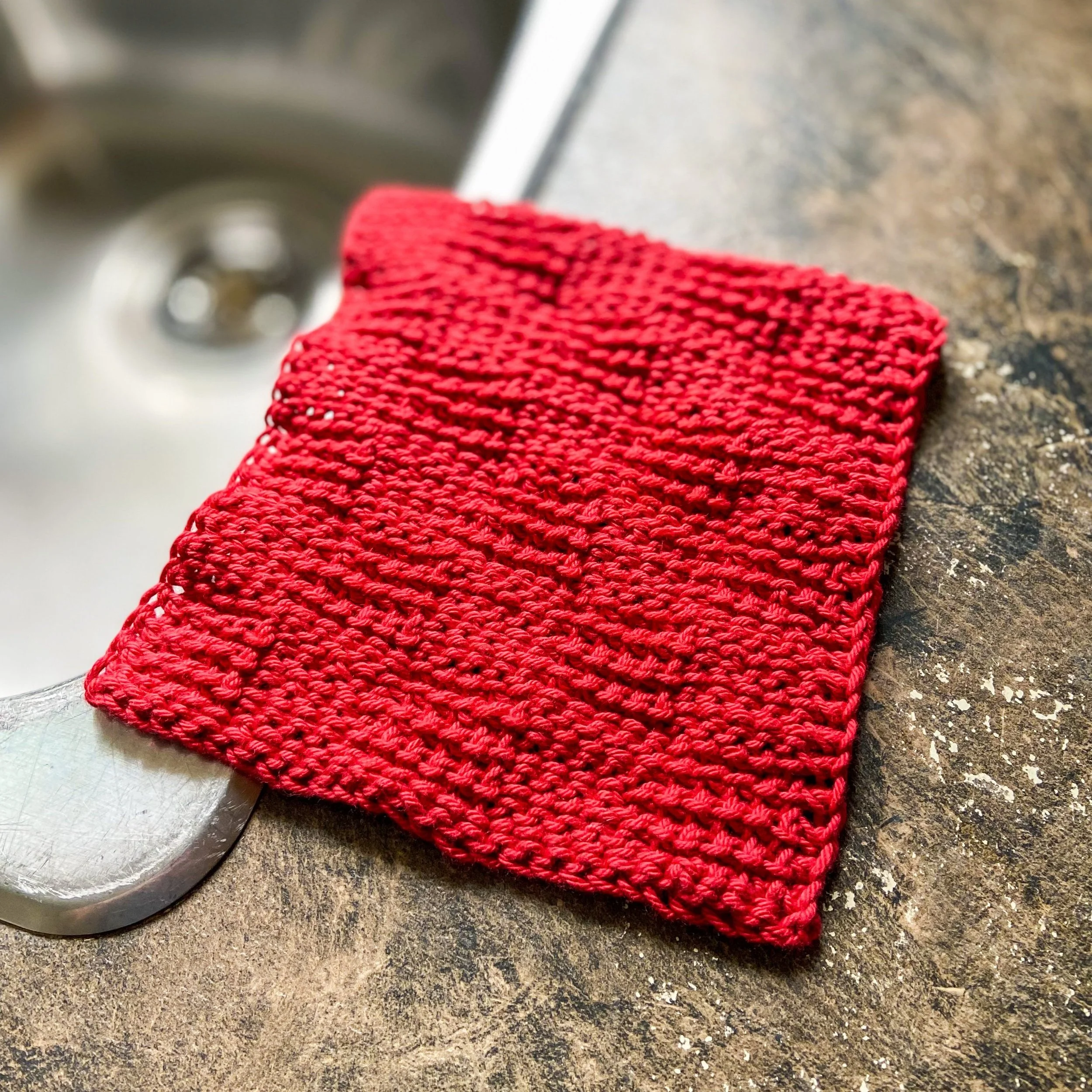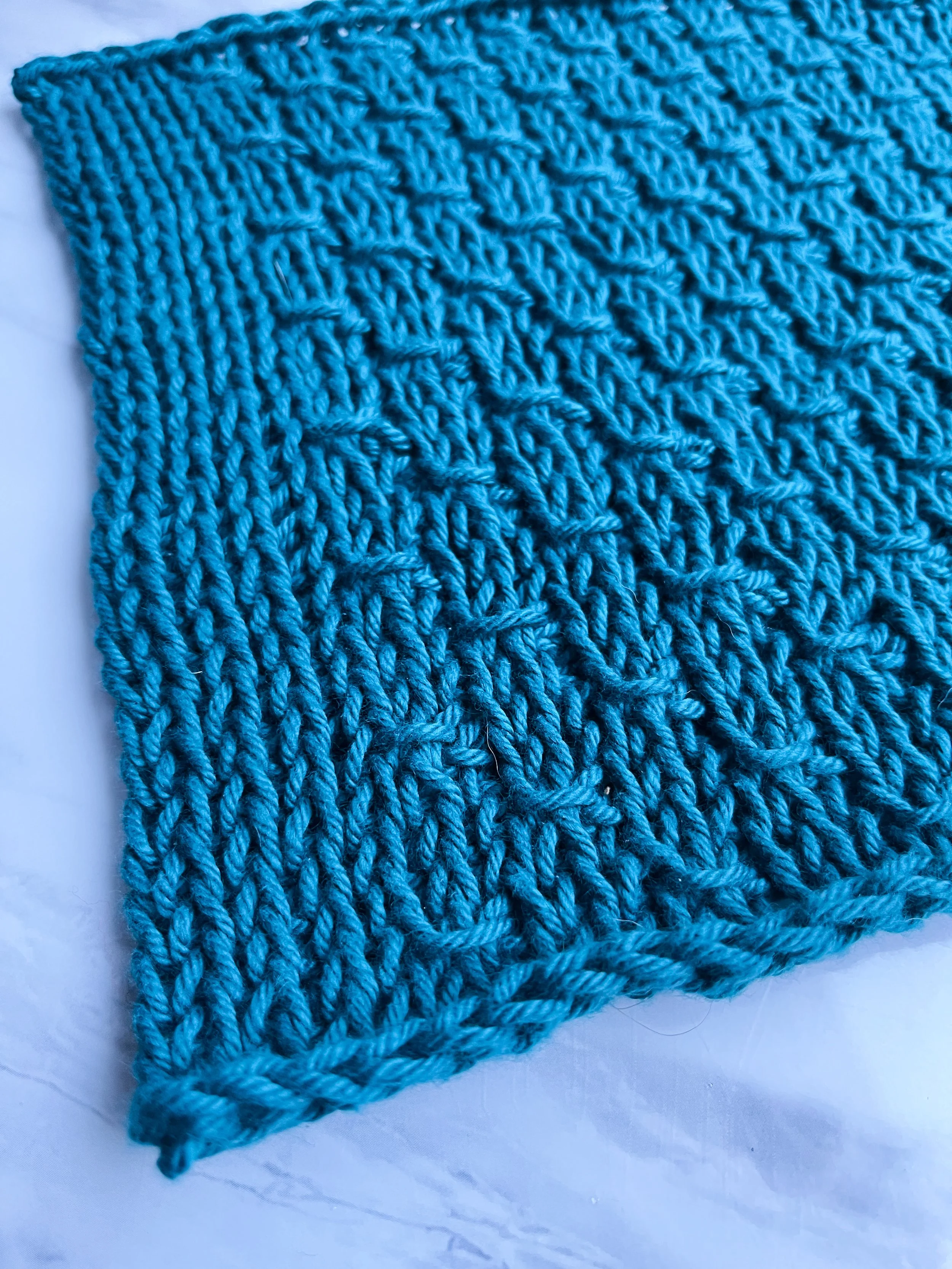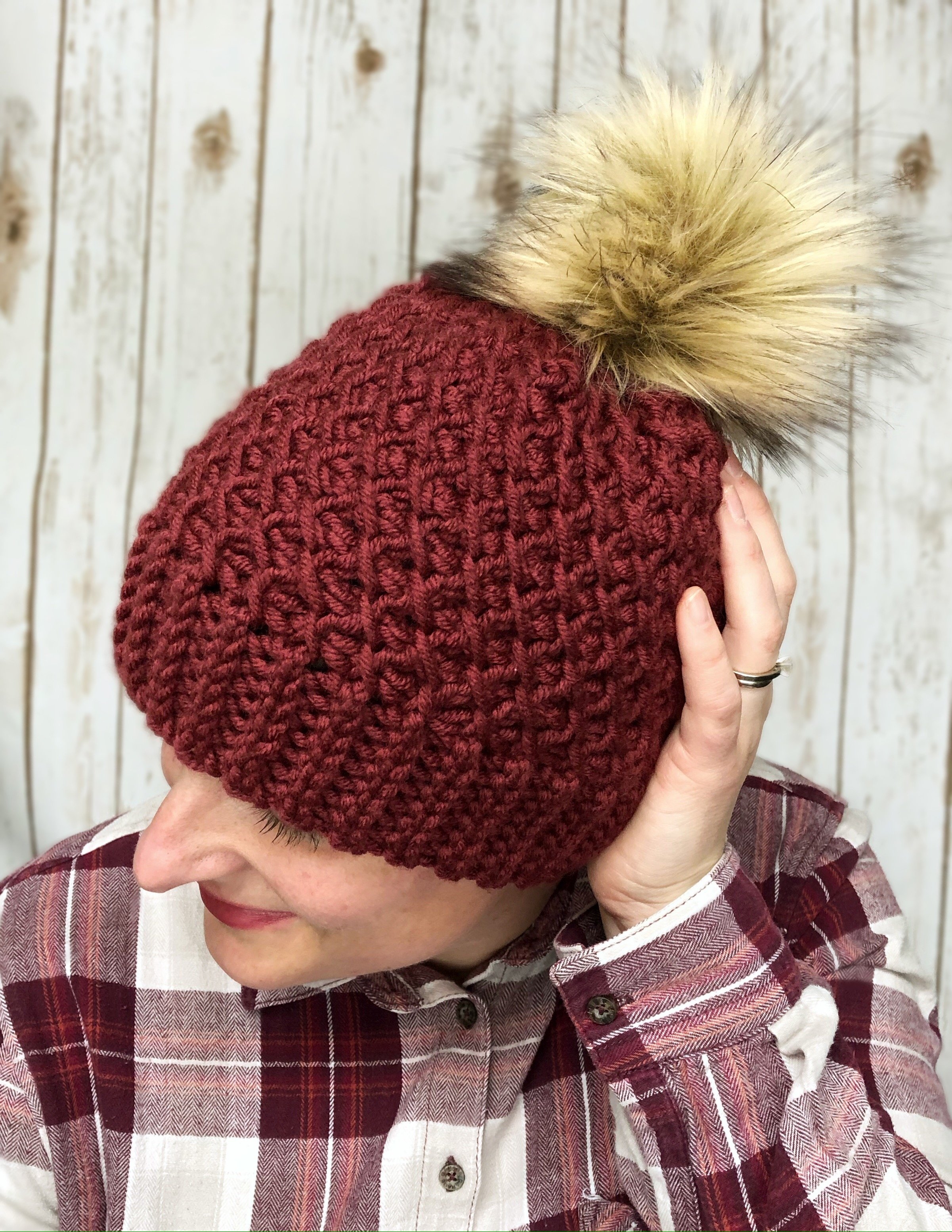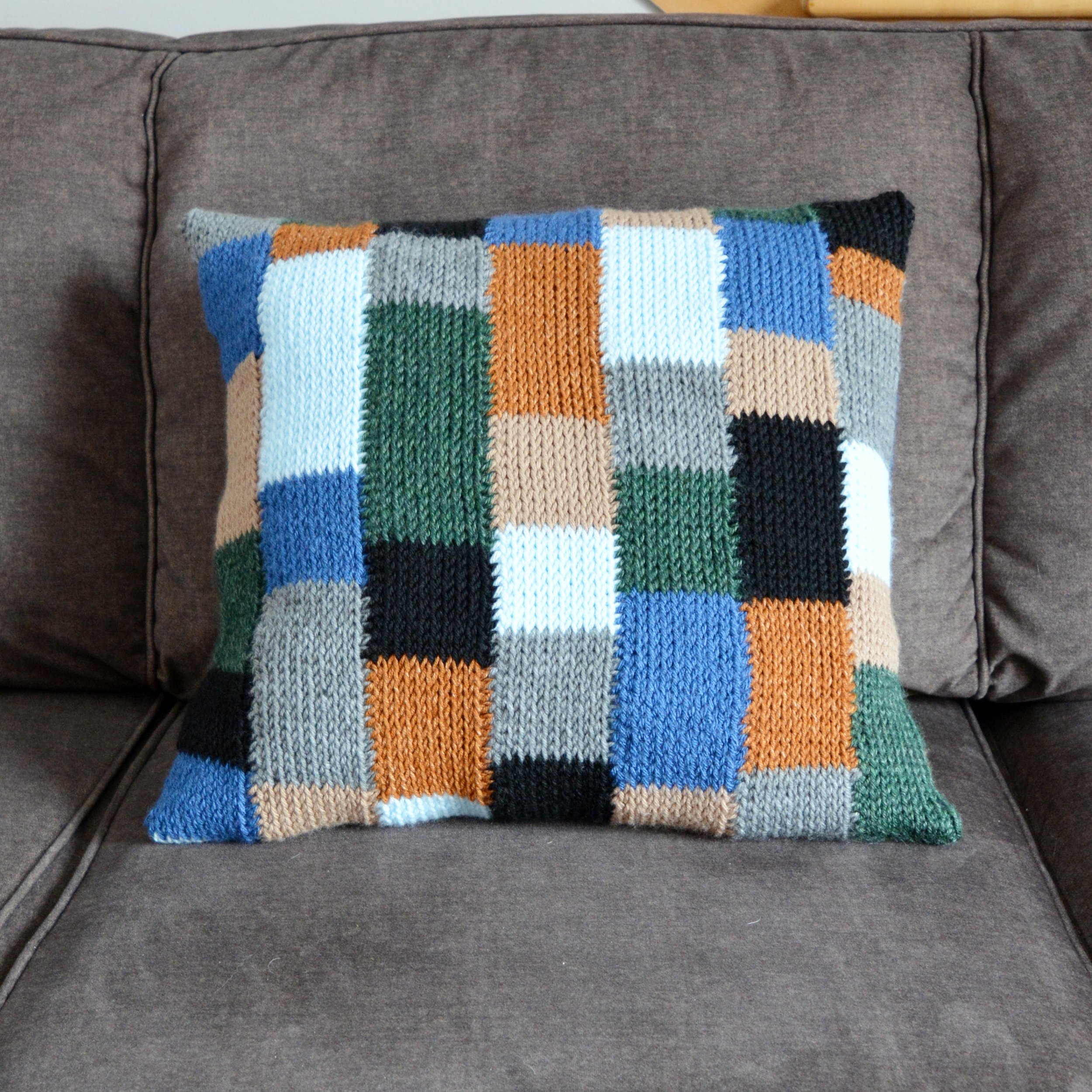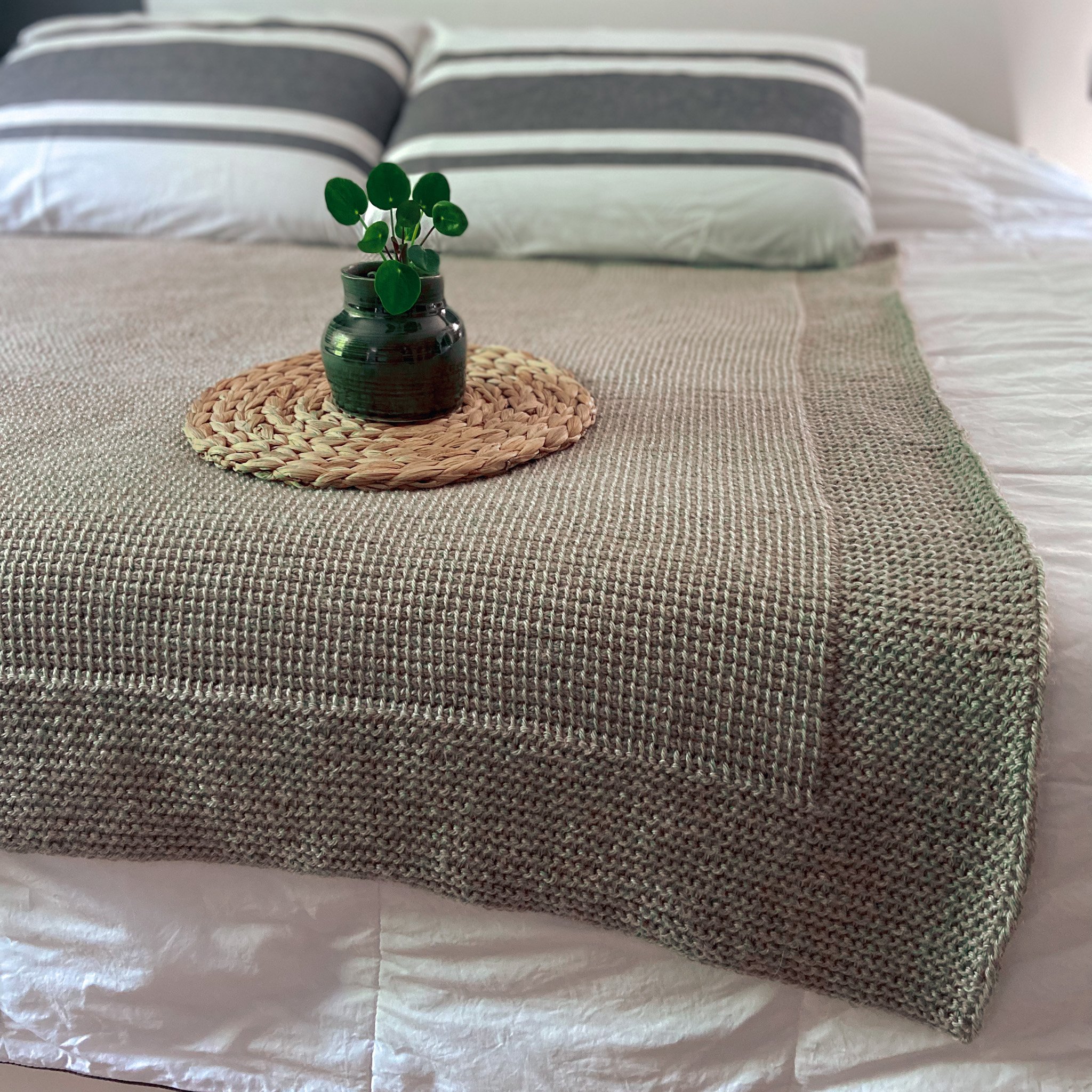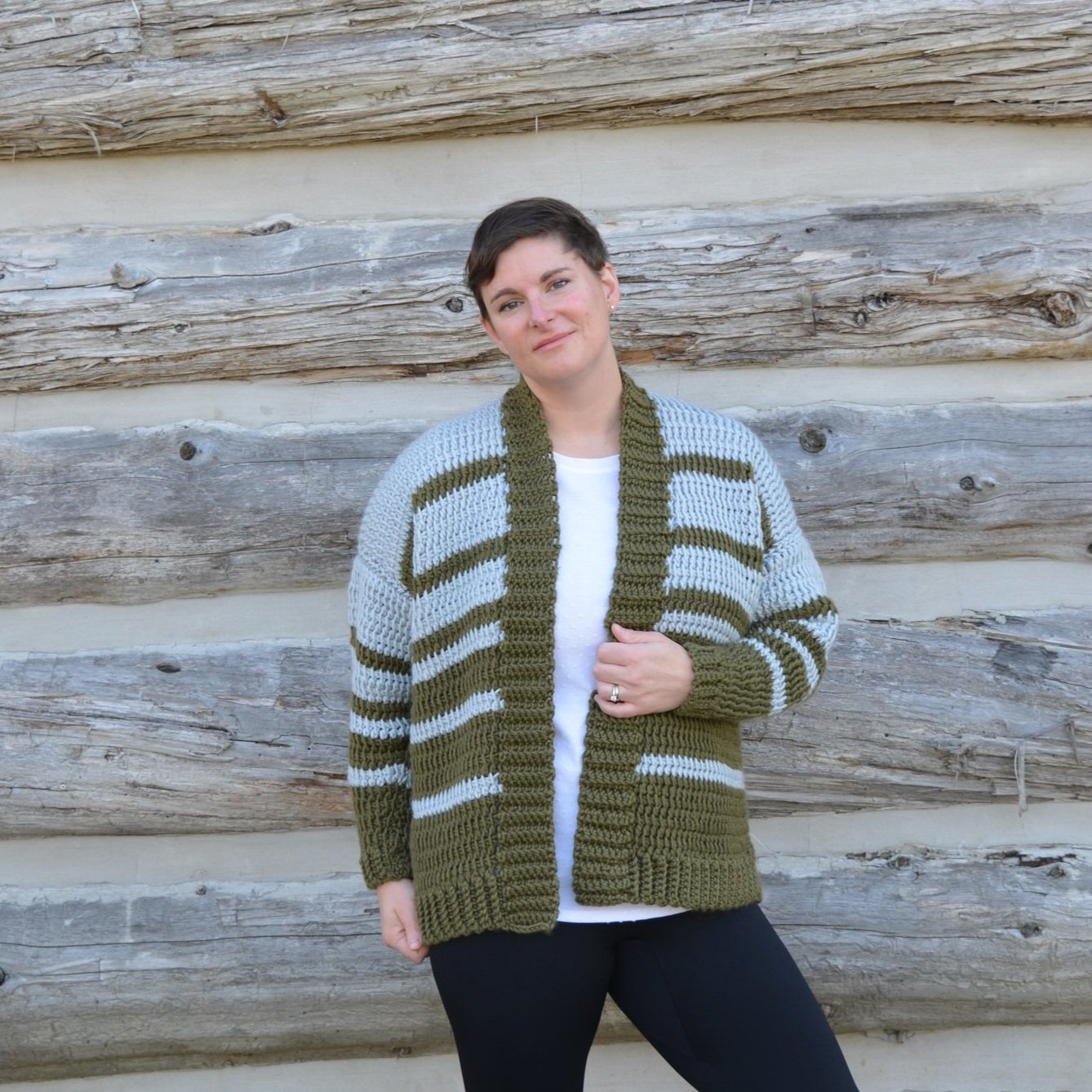Droplets Dishcloth
/This post may contain affiliate links, meaning that if you click through and make a purchase, I earn a small commission at no extra cost to you. This helps support my business and makes it possible for me to bring you free content.
Hello Tunisian crochet lovers!
It’s been a while, but I’m happy to share with you today the newest free pattern in the Stitch Exploration Series. This one has a beautiful texture that looks a lot more complicated than it actually is, so grab your cotton yarn and hook and let’s do this!
If you’re not familiar with my Stitch Exploration Series, here are the details: I like to share FREE crochet and Tunisian crochet dishcloth patterns that use an interesting technique, skill or stitch. I used to post them monthly, and I hope to get back to that this year. Check out the other free patterns in the series!
This series is all about testing out new crochet skills without the pressure of having to create a large project like a garment. When I’m designing, I find that I tend to choose familiar stitches, which can limit my creativity.
I’ve chosen dishcloths because they’re small enough to finish up quickly, but large enough to get a general idea of the fabric the stitch pattern will create!
For this series, I’ve chosen a beautiful, durable cotton yarn, Dishie from WeCrochet. It comes in lots of fun colours (30 solids in total, plus there are also Dishie Twist and Dishie Multi!), and it is really nice to work with.
It’s also really durable, making it great for dishcloths! In my experience so far, this yarn really holds up well during tough scrubbing.
I decided on the name “Droplets Dishcloth” because I think the details in this pattern look similar to a pond when a light summer rain starts to fall. It is both ordered and chaotic, with all the drops and ripples creating the sort of beautiful pattern that is only found in nature. I find something very comforting about that sort of scene.
Can’t make it right now? That’s ok!
Click here to pin this post to your Tunisian Crochet or Free Patterns board on Pinterest!
Check out some of the previous Tunisian crochet patterns in the series - the Speedbumps Dishcloth (tan) is another deceptively easy pattern, and the Tunisian Checkerboard Dishcloth (red) is really fun to work up. Find both of them here on the blog or save them to your queue on Ravelry!
If this is your first ever Tunisian crochet project, first of all, I am honoured! Second, I highly recommend that you check out a few tutorials first. This pattern is written with the assumption that you are comfortable with the basic stitches and can identify the different parts of the stitch (you’ll know what I mean once you get the hang of it!).
My dear friend Toni of TL Yarn Crafts has an excellent beginner video - check it out HERE.
Once you’ve worked a few practice rows and feel comfortable, dive into the pattern below, and let your obsession with Tunisian crochet begin. This pattern uses a deceptively simple technique that makes it look a lot fancier, and would be very easy to incorporate into larger designs… hmmmm…. the ideas are flowing!
Materials
Yarn: Worsted (4) weight cotton yarn, approx. 93 yds/85m.
Sample uses WeCrochet Dishie in Kenai (100% cotton, 190yds/100g per skein)
Hook: US K/6.5mm Tunisian crochet hook with short cord attached (or size needed to meet gauge). These are the ones I use!
Notions: measuring tape, scissors, yarn needle, blocking pins, mat and garment steamer or iron with steam setting (optional)
Terminology/Abbreviations
This pattern uses standard US terms as detailed by the Craft Yarn Council:
Ch: chain
Lts: last Tunisian stitch ( insert hook under both vertical loops in the last stitch of the row)
RetP: Return Pass (see Special Stitches section)
St(s): stitch(es)
Tks: Tunisian knit stitch
Yo: yarn over (see Special Stitches section)
Special Stitches
RetP: the Return Pass in this pattern is worked standard: Ch 1, *yarn over, pull through 2 loops on the hook, rep from * until 1 loop remains on your hook.
Yo: the yarn overs in this pattern are used to create the small horizontal bar details. You will not skip any stitches, and when directed, you will pass the extra loop created back over the indicated stitches.
Sizing
Gauge: 11 sts x 16 rows = 4”/10cm in tks, unblocked
Finished Measurements: approx. 8.5”/22cm square
See the Variations section below for instructions on how to easily modify the size.
Notes
The first loop on the hook counts as a stitch, but it is never mentioned in the instructions.
The pattern instructions are written for right-handed crocheters. Left-handed crocheters should substitute “right” where it says “left” in the pattern.
I don’t usually block cotton dishcloths before I use them, I just toss them into the sink when I’m doing the dishes. If you want to neaten things up for gifting, or if your edges are a little wavy, a gentle blocking can help to settle the stitches and even things out.
Pattern Instructions
Row 1: Ch 30. Starting in the second stitch from your hook, pull up a loop in the back bump of each ch st, RetP. < 30 sts >
Row 2: Tks across, Lts and RetP.
Row 3: Tks next 3 sts. *Yo, tks next 2 sts, pass the extra loop back over 2 tks just made, tks next 2 sts. Repeat from * until 2 sts remain. Tks next st, Lts and RetP. You should have 6 horizontal bars in this row.
Row 4: Repeat Row 2.
Row 5: Tks next 5 sts. *Yo, tks next 2 sts, pass the extra loop back over 2 tks just made, tks next 2 sts. Repeat from * until 4 sts remain. Tks next 3 sts, Lts and RetP. You should have 5 horizontal bars in this row.
Repeat Rows 2-5 six more times, then repeat Rows 2-4 once more.
Bind off: Work a sl st bind off, inserting the hook as for tks.
Fasten off and weave in the ends.
Variations
This pattern can be easily adjusted to create a larger or smaller dishcloth.
To adjust the length of the pattern, simply work fewer or more repeats of Rows 2-5.
To adjust the width, work fewer or more ch sts to start the pattern, ensuring you start with a multiple of 4.
Remember that any alterations to the stitch or row counts will adjust the yardage required.
Save this pattern to your Ravelry queue, or add a project to the pattern page!
Congratulations on finishing your Droplets Dishcloth! This is one of the prettier patterns in the series, and I think it’s going to be perfect for gifting.
I’m having a lot of fun exploring these new-to-me techniques, and I hope you are too! I’d love to see your dishcloths (in finished or WIP form!), or how you’re using the things you’re learning here in your own crochet projects.
Share your dishcloth on Instagram using the hashtags #DropletsDishcloth and #StitchExplorationSeries, and tag me, @capital.crochet!
Please feel free to sell finished items made from this pattern - pretty dishcloths make great craft show items! I would really appreciate credit for the design by linking back to this blog post.
Thank you so much for your support! If you’d like to be the first to know about new patterns in this series and other blog posts, make sure to subscribe to my newsletter below.
If you’re enjoying Tunisian crochet, be sure to check out some of my other Tunisian patterns!
The Thimble Beanie is a quick and easy pattern that uses bulky yarn - perfect for market makes!
The Stashdown Pillow is an excellent way to use up your scraps and adds a pop of colour to a couch or bedroom.
The Lisse Throw Blanket is a meditative make that brings warmth and comfort to your decor (also available as a kit via Lion Brand Yarn!).
If you’re ready to take on a garment pattern, check out the quick and cozy Flipside Cardigan!


